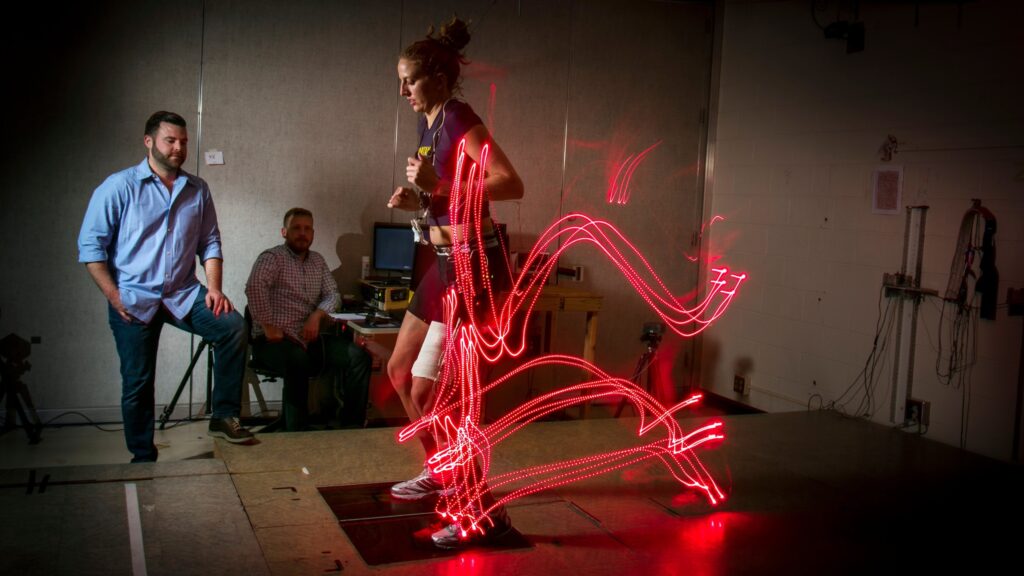Applied Neuromechanics Research Laboratory (ANRL)
Our focus is to understand risk factors for lower extremity injury and joint disease. The ANRL fosters a collaborative environment to support both faculty and student-initiated activities that strive to reduce lower extremity injury risk and improve the health and performance of physically active individuals of all ages.
The mission of the ANRL is to promote clinically driven research and quality education that bridges scientific inquiry and clinical practice. This is accomplished through an interdisciplinary approach to research and education that attracts and integrates students, faculty, and clinicians from diverse professional backgrounds, experiences and scientific perspectives
Genetic and Hormonal Influences on ACL Structure and Function
The laxity or ‘looseness’ of the knee joint has consistently been identified as a risk factor for ACL injury. This is particularly concerning for females who are greater risk for ACL injury, have more laxity than males, and who also experience acute increases in knee laxity during exercise and across the menstrual cycle.
Our lab seeks to understand the genetic and hormonal factors that precipitate greater knee laxity profiles in women, and determine both the biological (ligament structural quality) and biomechanical (dynamic knee stabilization strategies) consequences of this greater knee laxity on ACL injury risk potential. Ultimately our goal is to identify effective preventative pathways to mitigate the risk of ACL injury associated with greater knee laxity.
Biomechanical Factors of ACL Injury and Degenerative Cartilage Health
ACL Injury and subsequent long-term implications are a significant source of reductions in physical activity and increase in health-care needs. Lower extremity biomechanics are often a primary target of ACL injury prevention.
We seek to understand the influence that the multifactorial nature of knee biomechanics play in the role of non-contact knee injury and subsequent knee articular cartilage health.
Neural Correlates of ACL Injury and Degenerative Cartilage Health
ACL injury has been previously described as a motor coordination error that puts the joint in a position of risk. Neurocognitive influences on noncontact ACL injury have received little attention despite their obvious implications in maintaining neuromuscular control.
Identifying positive neuroplastic changes and associated exercise prescription to prevent initial and subsequent ACL injuries is a paradigm-shifting approach to maintain joint integrity.
